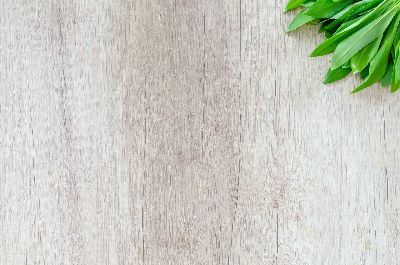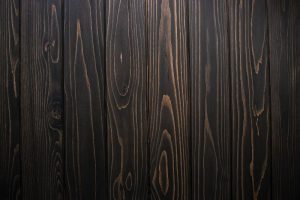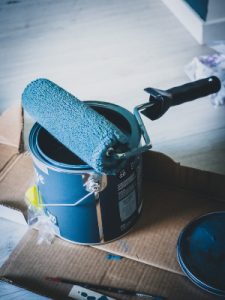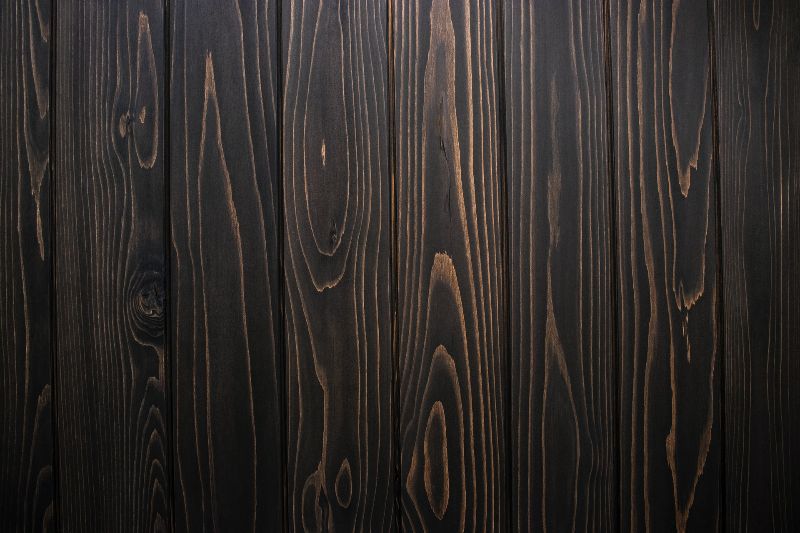Take a minute to reflect on the ubiquity of painting worldwide; few arts are as popular. The global practice of painting has led to the manufacture of countless paints. We often draw parallels between these paints, and today’s spotlight is on eggshell vs semi gloss paint.
The two paints contrast in many ways, including appearance, durability, finish, coverage, maintenance, cost, and ease of use. In this review, I’ll begin with defining the eggshell and semi-gloss paints and proceed to a detailed account of their differences and similarities.
Knowledge is power, and we develop knowledge from information. This is free information, so I urge you to read through it for maximum benefit.
What Is Eggshell Paint?
 Eggshell paint is a colored substance that ranks between satin and flat paint on the sheen/simmer spectrum. It reflects a tiny bit of light, meaning it has little luster.
Eggshell paint is a colored substance that ranks between satin and flat paint on the sheen/simmer spectrum. It reflects a tiny bit of light, meaning it has little luster.
The faintness of its sheen pulls out the paint’s tone a little. The paint produces a sense of depth that’s unique to itself.
Paint manufacturing industries make the eggshell paint by varying the proportion of pigment vs. binder in the paint. Eggshell paint has a lower binder percentage than semi-gloss paint, hence a lower radiance.
Binders in paint create sheen and promote their durability; this means eggshell paints aren’t as resilient as semi-gloss paints and other high gloss paints. The paint is also a little harder to wash up and has a poorer water-resistance profile than semi-gloss paint.
Due to the low binder amounts, eggshell paints have a higher pigment content. Therefore, it’s easy to get broader paint coverage in a few coats. In addition, its lower sheen is good at covering superficial defects.
All in all, eggshell paints are affordable, easy to apply, and touch-ups are relatively inconspicuous. Plus, it requires fewer coats of paint, making it faster and less tedious to use.
Egg Shell Paint Pros and Cons
Let’s look at the pros and cons of eggshell paints:
Pros
- It’s pocket-friendly
- The paint has excellent surface coverage
- It is easy to lay down and touch up
- Eggshell hides floor defects like cracks and stain spots
Cons
- The paint is less durable
- It is difficult to clean
- It has poor moisture resistance
What Is Semi Gloss Paint?
 The semi-gloss is a paint that ranks between satin and high-gloss on the sheen scale; it has a more noticeable sheen than its eggshell counterpart.
The semi-gloss is a paint that ranks between satin and high-gloss on the sheen scale; it has a more noticeable sheen than its eggshell counterpart.
Semi-gloss has a higher binder to pigment ratio, giving it a stronger glow; light reflects easily off its surface.
Sometimes, these paint finishes reflect an overwhelming and somewhat uncomfortable amount of light; this happens when you use the paint in large surface areas with several light sources.
The paint is more beneficial (aesthetically) in small to moderate-sized surfaces with fair lighting.
This paint is an excellent performer regarding durability; its high binder percentage confers protection against wear. It also holds up well to aggressive cleaning methods like using firm-bristled brushes.
Additionally, when you expose this paint to high moisture content, it shows excellent resilience! It’s therefore suitable for highly humid environments, even beyond 60% relative humidity.
The downside to this paint is that it’s not the best for hiding floor defects, and it also highlights floor/wall touch-ups or mends.
Due to a high binder proportion, the paint has less pigment content. Therefore, you need more coats to get a firmer cover.
Finally, semi-gloss paint is more expensive than eggshell paint. This difference in costs is more prominent when you purchase large amounts of paint for working on large projects.
Semi-Gloss Paint Pros and Cons
Some of the pros and cons of semi gloss paints are:
Pros
- The paint is water-resistant
- It is easy to spruce up
- Semi-gloss is long-lasting
- It lights up dull spaces
Cons
- It is more costly
- The paint is challenging to apply
- Touch Ups are visible
Comparative Analysis of Eggshell Vs. Semi-Gloss Paint
Eggshell and semi-gloss are close on the luster scale; only the satin finish lies between them. This proximity often leads to confusion among prospective buyers.
It becomes easier to pick the right choice for your project when you understand the differences between semi-gloss vs. eggshell paint.
I’ll draw comparisons between the two paints in this segment’s clear and well-articulated discourse.
Without further ado, these are the parameters of the comparison:
Appearance
Appearance means the visually discernible aspects of the paints, the most obvious of which is the sheen.
Sheen means luster or glossiness. Semi-gloss paint has a higher sheen than eggshell paint.
When you visualize the two paint finishes from afar, the semi-gloss surface appears to glow while the eggshell surface seems lackluster. It is because the semi-gloss paint reflects light while its eggshell counterpart absorbs light.
The different reflective properties of the two paints have a bearing on your workpiece’s final outlook. Semi-gloss paint leaves a beautiful view on the floor/wall, while the eggshell paint outlook is less so.
Also, we mostly discern the reflected light from its surface; this is beneficial because it gives you room for creativity to change its appearance.
When varying light intensities hit a semi-gloss surface from different angles, it will keep changing its appearance; the eggshel will maintain its appearance under similar circumstances.
Finish
The glossy nature of semi-gloss paint leads to a smoother finish on surfaces; this leads to a skiddy feeling that’s good for walls and some furniture.
Make no mistake, eggshell paint also gives a smooth finish but is not as skiddy as the semi-gloss. Eggshell paint is thus suitable for floors and furniture like chairs, which require a skid-less surface.
The similarity is that both paints have smooth finishes; the difference is that one has a more skiddy finish than the other.
Another difference is that a semi-gloss finish is prone to unevenness and streaks, revealing touch-ups. All these are due to the high binder amounts and shiny appearance of semi-gloss compared to eggshell.
Durability
Durability, in painting terms, is the ability of the paint to retain color, sheen, and adhesive power.
Semi-gloss paint is more durable than eggshell paint! The high amounts of binders in semi-gloss make it strong, resilient, and resistant to common causes of damage. The common causes of damage include adverse weather conditions, chemical spills, and scrubbing when cleaning.
To emphasize the above point, “binder” comes from the verb “bind,” which means to tie or fasten tightly. Therefore, the high binder percentage of semi-gloss makes the surface tighter, more rigid, and resistant to damage; all of these bear the trappings of durability.
Semi-gloss paint also holds up well against stains: this improves durability in the sense that you don’t have to clean as frequently as eggshell paint.
As I’ve already mentioned above, eggshell paint has comparatively less binder than semi-gloss; this means it ranks lower on the durability index.
It also has a poor stain-resistant profile: this calls for frequent cleaning and water exposure that further compromises its durability.
Coverage
Paint coverage is the rate at which it spreads on a painting surface; it is often gauged in gallons per square foot. Eggshell paint has better coverage than semi-gloss; this is so because the former has a higher pigment to binder ratio than the latter. Thus, you can use fewer coats with eggshell than semi-gloss.
Pigment promotes coverage while binder promotes sheen level. The high binder capacity of semi-gloss paint leaves little room for pigment and, therefore, less coverage.
Consequently, you can use a gallon of eggshell paint over a larger area than a gallon of semi-gloss.
Maintenance
Both of the above paints have advantages and pitfalls concerning maintenance.
Beginning with the advantages, semi-gloss doesn’t accumulate dirt quickly and therefore needs little cleaning; it’s also resistant to damage from scrubbing. All these are desirable maintenance features.
Eggshell outclasses semi-gloss when it comes to touch-up compliance, i.e., the ability to handle refurbishments. The renovated patches blend in easily with the existing paint; this is beneficial for maintenance.
On the flip side, semi-gloss doesn’t handle touch-ups quite well. Once you lay it down, any form of refurbishment will stand out from the rest of the painted surface.
The repairs stand out because the patches have a lower or different luster from the rest of the wall/floor. This is a drawback to maintenance because you will repair any form of damage at the cost of aesthetics.
Eggshell has its downside also: it’s easy to scratch when cleaning, especially when using firm-bristled brushes to scrub. It also requires frequent cleaning, which is tedious.
Ease of Use
On the whole, eggshell paint is less challenging to use than semi-gloss. This is due to its ease of application, better coverage index, and better ability to hide floor imperfections. I’m not declaring eggshell to be the easiest to use out there. I’m only comparing it with semi-gloss paint.
Eggshell is more straightforward to apply due to low binder amounts hence easy handling. The better coverage index is also due to low binder proportions, therefore, low viscosity. The remarkable ability to hide streaks and other flaws is due to high pigment amounts.
Cost
In general, Eggshell paint costs less than semi-gloss. The price range varies depending on the manufacturing company and brand.
The price difference isn’t much of a worry for a small painting area. If your project is large, you’ll definitely feel the impact of the price difference.
However, the higher cost of semi-gloss comes with an excellent durability profile, a welcome trade-off.
Therefore, before purchasing any of the two paint finishes, you need to do a cost-benefit analysis to determine what will serve you better.
Uses
Both of the paints in question are good for any surface. However, they edge each other out in some aspects like durability, visual appeal, coverage, and maintenance.
Semi-gloss is great for bathrooms and kitchens as it’s moisture-resistant and durable. It’s also suitable for kitchen cabinets and furniture because it is easy to clean.
Semi-gloss and other higher gloss paints are used on walls and flooring of buildings that require good lighting. The facilities include museums, hospitals, learning institutions, and high-end hotels—all the above benefit from the reflective properties of this paint.
Eggshell paints and lower gloss paints are used on walls and flooring of buildings that need little to no light, e.g., storage units for light-sensitive chemicals, residential buildings, commercial houses for low-light plants, and correctional facilities. All these are due to their light-absorbing attributes.
Due to its low durability, eggshell is also suitable for minimal traffic surfaces, for example, ceilings. It’s important to note that it eggshell suits ceilings only if the lighting isn’t an issue.
In short, semi-gloss lights up dull rooms while eggshell prevents unnecessary radiance.
What Paint Is Better: Eggshell or Semigloss?
In an overall sense, neither of the two paints is better than the other! The paints outdo each other only in a few facets, but they also have drawbacks. I’ve already mentioned and analyzed the advantages and flaws of the paints in question; just refer to the preceding segments of this article.
In a nutshell, eggshell paint suits tasks that don’t gel well with semi-gloss. By the same token, semi-gloss paint serves better than eggshell in some functions. Therefore, it’s somewhat illogical to rank one above the other.
To end the dilemma, all of the paints named above are excellent! You only have to know what your surface needs.
How to Make Semigloss Paint Eggshell
A situation may arise whereby you apply semi-gloss and then realize you need eggshell paint instead; maybe because the semi-gloss is too shiny, or you’re just unimpressed.
So what happens when your wall or floor is in the above state? That’s exactly my point in this segment! I’ll steer you through how to make semi-gloss paint eggshell.
There are several ways for doing the above; you can apply an eggshell finish coat on the semi-gloss, use a commercial deglossing chemical, or you can sand.
Applying a clear eggshell topcoat is the simplest of the three methods; it dulls the luster without changing the color underneath. Plus, you only need to use a single coat correctly, and you’re done.
For the eggshell application, it’s crucial to have the right roller sleeve, i.e., a roller cover with wool fibers and a three-eighths inch nap. Longer naps are for rough finishes.
 When rolling, do not wring out too much paint because it will lead to the formation of ridges when coating. To avoid the appearance of ridges, press the paint roller gently on the surface and ensure you always load it with paint. If you want to keep a loaded roller, put copious amounts of the eggshell in a paint tray enough to cover the roller.
When rolling, do not wring out too much paint because it will lead to the formation of ridges when coating. To avoid the appearance of ridges, press the paint roller gently on the surface and ensure you always load it with paint. If you want to keep a loaded roller, put copious amounts of the eggshell in a paint tray enough to cover the roller.
Another critical point regards the rolling procedure: make sure you roll in one direction only, whether it’s diagonally, horizontally, or vertically on your workpiece. If your workpiece is a wall, I recommend rolling from ceiling to bottom rather than from floor to top.
When laying down a given coat, do so for the entire floor/wall; this ensures you maintain a wet edge during the painting. During painting, you lose the wet edge when you take long breaks, and the eggshell won’t dry or cure evenly.
For the eggshell, one coat will suffice, but you can choose to apply a second coat for improved results. If you take the two-coat route, scour the surface after the first coat, then apply the second coat. Let the eggshell dry for at least 24 hours.
After drying, inspect your results using a work light. Hold the work light obtusely and illuminate the floor for any faults. If you’ve followed all the above procedures correctly, you won’t find any defects. But if there’s a defect, sand it using fine-grit sandpaper, then patch up using the remaining eggshell.
The second method of making semi-gloss paint eggshell is using deglossing agents. These are chemical agents, so make sure you ventilate your working area and wear all protective gear before you begin.
The method involves formulating a deglossing solution from a powdered agent or it could come as a ready-made solution. You have to follow the manufacturer’s directions for successful semi-gloss removal here.
It’s because there are slight variations in constituent chemicals among the manufacturing companies. Ensure that you first test on a hidden spot on the floor or wall before proceeding to the rest of your working area.
The third method is sanding! It involves slightly scuffing the painted floor or wall to dim the semi-gloss sheen. Use fine-grit sandpaper for this undertaking, i.e., 400 to 600 grit; test on an inconspicuous spot first before you proceed to the main floor.
Sanding is hugely labor-intensive, even for a small working area. If you have a vast working space, I advise you to rent a commercial sanding machine from a local depot. You can also solicit help from neighbors or friends.
Ensure the sanding is consistent so that you achieve a uniform eggshell-like surface.
How to Make Eggshell Paint Semi-Gloss
Yes! You may find yourself in this second quandary where you want to change an eggshell paint into semi-gloss. As you may have realized, it’s the reverse of the segment that I’ve just concluded.
The best and currently available method is using a semi-gloss topcoat! It will improve the luster of your surface without changing the color beneath the coat. It works on all surfaces, whether a wall, furniture, or floor.
Be extra keen when applying a semi-gloss finish as it’s prone to streaking and other inconsistencies.
Can You Mix Eggshell and Semi-Gloss Paint?
Mixing semi-gloss with eggshell paint is feasible. As you may have predicted, you’ll end up with an intermediate paint shade, which is a quasi-satin appearance.
However, mixing the two paint types isn’t as straightforward as it sounds. Poorly-mixed paints lead to streaks and clumps on surfaces which ultimately ruin your entire project.
The most straightforward approach to ensure the eggshell and semi-gloss paints mix homogeneously are using paints from the same brand.
Most companies use similar constituent chemicals to make different products. So, there is a high likelihood of uniform mixing if the paints in question come from the same brand.
The other approach to ensuring the successful mixing of eggshell and semi-gloss is an exercise of due diligence on your part. This involves continually mixing paints from different brands until you get a uniform mixture.
As you can see, this is a trial and error method that’s tedious! Plus, you may end up not getting the desired combination after a long day’s trial. That’s why I recommend using paints from the same brand.
How to Mix Semi-gloss and Eggshell Paint
 We’ve seen from above that you can mix semi-gloss with eggshell paint and that the best approach to achieving success is using paints from the same brands. Now, I’ll take you through the actual process of how to mix semi-gloss and eggshell paint.
We’ve seen from above that you can mix semi-gloss with eggshell paint and that the best approach to achieving success is using paints from the same brands. Now, I’ll take you through the actual process of how to mix semi-gloss and eggshell paint.
After buying from the same brand:
- Check for compatibility by making a small test batch.
- Take a tablespoon of each paint and put it in a disposable container.
- Stir thoroughly until the mixture forms a uniform color. The resulting shade will be an intermediate between the two paints.
Next, do a test run of the new paint by applying it on scrap cardboard; let the paint dry for 15 t0 20 minutes. Afterward, inspect the outcome for streaks, clumps, or any inconsistencies. If the paint passes the above test, proceed to the main mixing as follows:
Open up the two paint cans and stir with different paint stirrers or paddles until each forms a consistent color. Then, put a sheet of window screen material over an open bucket and secure it by taping. Pour each paint through the window screen to sieve out clumps or any foreign material.
You have the liberty to use a mixing ratio of your desire; all I can say is it will impact your final paint shade.
Finally, stir the mixture using a paddle or an automatic stirrer until it gets to a homogeneous level.
Perform another dry run by applying the paint on an inconspicuous floor spot before application. Let it dry and check if the paint has adhered well, i.e., no streaks, bubbles, or clumps. If so, proceed to the main painting task.
Why Does My Eggshell Paint Look Shiny?
At times you may lay down an eggshell paint and end up with a sheen that’s more lustrous than expected. The above state of affairs can make you sigh, “Why does my eggshell paint look shiny?”
Eggshell paint appears unusually glossy when you apply an old paint that’s effectively overdue. Another reason for a shiny eggshell is when it hasn’t had enough curing time.
On the first point, when you store eggshell paint for long, it ages, gradually loses its viability, and eventually expires. Applying this paint on any surface won’t adhere well and will appear shiny due to its poor quality.
On the second point, this paint takes so long to cure after application; this is especially so for oil-based and latex eggshell paint, which takes 30-60 days curing time.
The paints will appear shiny before they dry and cure fully; the eggshell finish appears only after curing. Therefore, I advise you to wait for around eight weeks before checking the final sheen.
How Do You Make Eggshell Paint Look Flat?
In descending order, the paint sheen rank is high-gloss, semi-gloss, silk, satin, eggshell, then flat. We’ve already looked at how to make semi-gloss paint eggshell. I’ll continue down the sheen rank to show you how to make eggshell paint look flat.
There are three methods to this: painting a flat coat over the eggshell paint, applying a deglossing agent, and sanding.
I recommend painting a flat coat over eggshell as the first-line approach to the above task. Make sure you use the dull coat liberally to cover the eggshell completely; otherwise, the sheen will remain unhidden.
The other approach employs the use of deglossing agents. These chemical substances abrade your floor or wall to loosen the paint. Take the necessary precautionary measures before starting deglossing; the measures include ventilation and putting on protective gear.
It’s essential to follow the manufacturer’s manual when deglossing since different brands use slightly different chemical components.
To determine if the deglossing chemical is effective, test it out on an inconspicuous part of your workpiece.
The last approach is sanding; it entails abrading the eggshell paint until it loses its luster. Use 600-grit sandpapers to scrape off the eggshell. If your project is large, rent a commercial sanding machine from your local warehouse. Remember to test the sanding on hidden spaces before you begin.
How to Change Semi-Gloss Paint to Flat
There are two scenarios here:
- Changing an unused semi-gloss paint to flat.
- Changing an already painted semi-gloss surface to flat. I’ll address both situations accordingly.
In the first case, the semi-gloss has not yet been applied to a surface. Here, you only need to alter the pigment/binder ratio to shift from semi-gloss to flat paint. Binders reflect light (glossy property) due to their high resin component. At the same time, pigments absorb light (flat property) due to its high dye component.
You can shift from semi-gloss to flat from the paragraph above by adding more pigment to semi-gloss.
The second case involves a surface that’s already painted with semi-gloss; how do you change this to flat? There are three approaches:
- Painting a flat coat over the semi-gloss
- By using a deglossing chemical
- Sanding off the floor
I’ve already discussed using the three methods under the subheading “How to Make Semigloss Paint Eggshell.” The methods follow the same protocols as I had highlighted.
Does Eggshell Paint Dry Shiny?
Eggshell paint takes 6 hours to dry and 4-6 weeks to cure, but does it dry shiny?
First, the finish mentioned above is low-sheen (comparable to an eggshell surface); this means it ought to have a rather dull appearance.
The finish will look shiny in the first few hours of painting because it’s still wet. The sheen level reduces over time as the paint dries and culminates in a lackluster eggshell appearance after curing.
Even after drying and curing completely, the eggshell retains subtle luster as it can still reflect small amounts of light.
Does Eggshell Paint Lose Its Sheen?
There are numerous paints out there; most are legitimate, some are poor quality, and others are downright fake or counterfeit. Given its top-rate billing, does eggshell paint lose its sheen?
Well, paints lose their sheen as time elapses! Eggshell is no exception. The inevitable nature of aging means the paint will change with time, not only in sheen quality but also in adhesive power and texture.
In that regard, what matters is how fast the sheen is lost or, in a word, durability. Third-rate eggshell paints lose their shine faster than the top-notch ones. Therefore, be keen to purchase from trusted and reputable sources like Amazon for excellent outcomes.
Another factor that determines sheen loss is how you lay down the eggshell. If you duly follow the manufacturer’s guide, the sheen loss will proceed at a standard rate. If you don’t follow the correct procedure, the paint will lose its luster faster.
Conclusion
To conclude, there are numerous types of paint that are manufactured worldwide. It’s imperative to know the distinguishing features between paints so that you can buy the right one for your project. This article compares…
Eggshell Vs Semi Gloss Paint
The paints differ in several aspects that involve durability, ease of use, sheen, cost, maintenance, and coverage. Of the differences I’ve mentioned above, the sheen or shine level is the most noticeable.
We’ve also made the following inferences:
- It’s possible to change paints, i.e., from semi-gloss to eggshell and vice versa.
- None of the paints in question is better than the other; it’s only a matter of going for what’s best for your workpiece.
- Binders are responsible for the sheen quality and durability of paints.
- Pigments are responsible for the color property of paints.
- You can mix eggshell with a semi-gloss paint.
- Both eggshell and semi-gloss lose their sheen over time; incidentally, this extends to all paints. The difference in sheen loss rates depends on the quality of your paint and the proper application technique.
After reading the entire article, rest assured of success when handling eggshell and semi-gloss paint in any way. I’ve researched and written the review with diligence so I’ve got you covered through and through. All you have to do is read and follow keenly.
You can always come back for reference, or for more related content.
